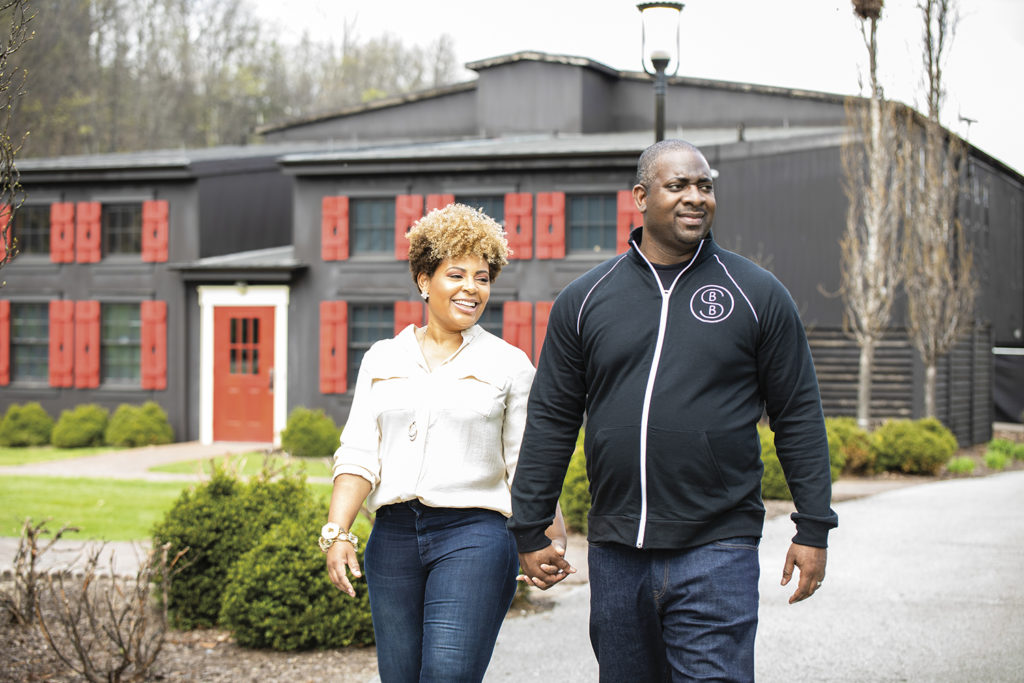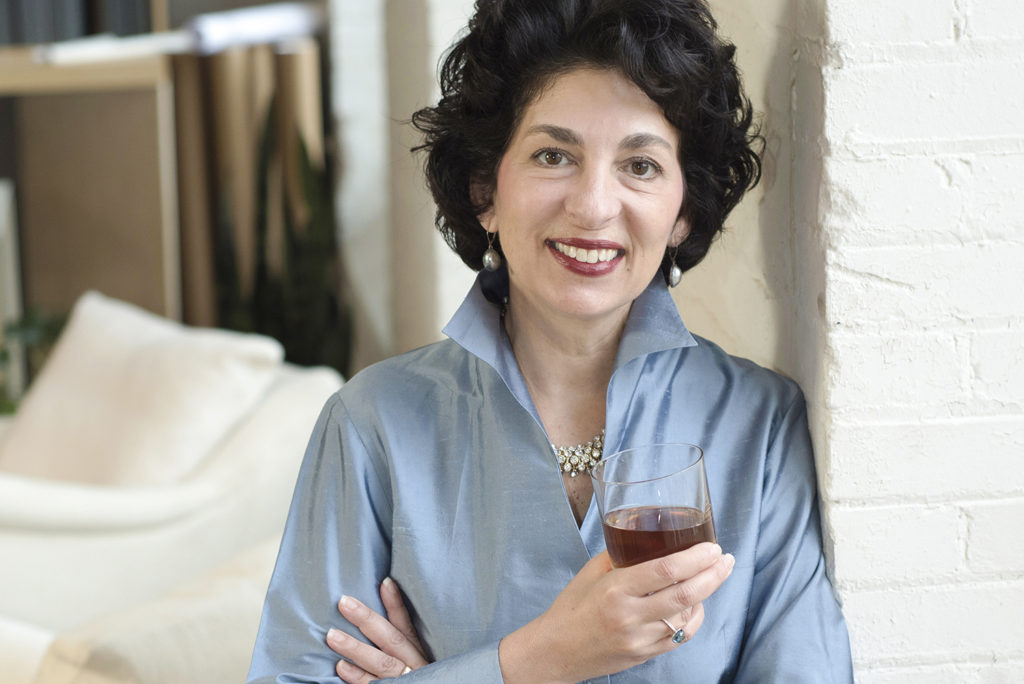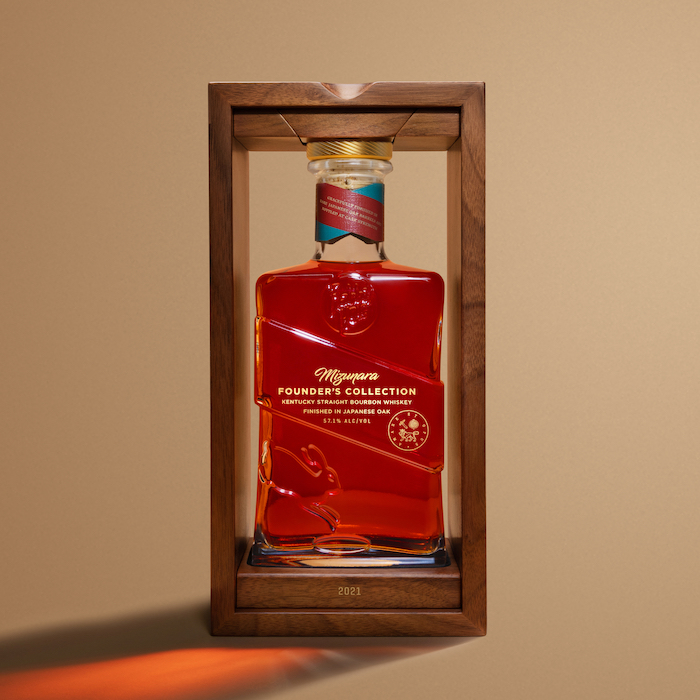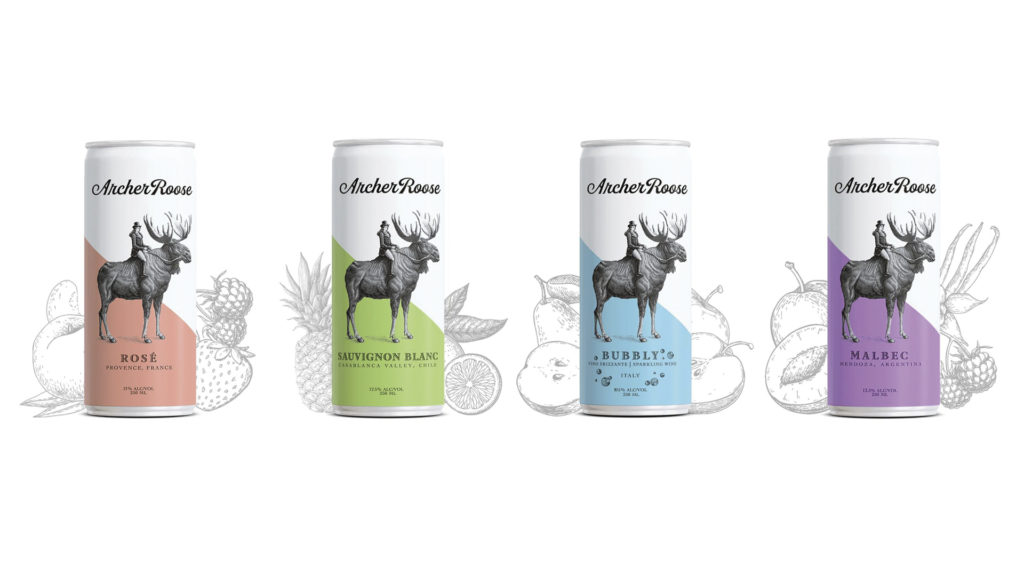Alcohol trends have shifted significantly in the past two years. The world of 2019 feels like decades ago. The generational pandemic of 2020 reshaped our lives in a rapid, lasting fashion.
However, not everything from the time of Covid-19 is here to stay. Some trends born or supercharged by this extraordinary event will inevitably fade with the virus itself. Others will stick.
Which are those trends? And better yet, which trends will emerge or strengthen during these next few years, as America and its economy recover from a once-in-a-century crisis?
It’s tough to forecast even the immediate future, given the unusual nature of the pandemic. Our modern world has never experienced anything like Covid-19, or the inevitable post-peak recovery. Nevertheless, we have identified nine alcohol trends that will likely grow, even as the pandemic declines.
1) Ecommerce Alcohol Trends
The most dominant alcohol trend from Covid-19 was ecommerce. As consumers sheltered at home, many people discovered for the first time that they could order alcohol online.
“We had our business model live for the last three to four years, but there was a marked shift in the conversation once the pandemic hit,” says Josh Jacobs, co-founder and CEO of Speakeasy Co. “Working with alcohol retailers, Speakeasy helps more than 250 brands sell alcohol and merchandise directly from their websites.”
“A lot of industry players needed to innovate overnight,” he adds. “And they’re realizing that ecommerce is not just about surviving the pandemic: it’s a long-term differentiator to survive. Ecommerce is an effective channel for growth and profitability.”

This effective growth is one reason why ecommerce is unlikely to slow significantly after the pandemic. Retailers and brands alike can reach more new customers online.
Another reason for ecommerce’s post-Covid stickiness is convenience.
“There’s a comfort level established now for consumers to purchase wine online and have virtual experiences,” says Sara Moll, founder and CEO of Vin Social, which provides wine education and digital brand platforms. “Not everybody has the means to go to Napa Valley and find that small, off-the-beaten-path winery. Now, consumers can meet those winemakers online.”
This meeting between producers and consumers represents another step forward in ecommerce. Digital marketing is no longer simply a stream of content on social media. Now, savvier companies connect directly with consumers, forming personalized relationships that benefit business.
“At the end of the day, it’s about control over the customer relationship,” says Jacobs. Those relationships are priceless, he adds, because they generate direct feedback on products and services from users, shortening the innovation cycle. And the data and analytics collected through ecommerce show who is buying what — and when — allowing for better targeted marketing and communications.
“If you don’t have a direct relationship with your consumers, how do you know when to remind them that you exist, and to send them a 5% off coupon when their favorite bottle is nearly empty?” Jacobs says.
2) Diversity and Inclusivity
The industry has come a long way in improving diversity and inclusivity, but still has further to go.
On one hand, this is about fairness and equal opportunities. On the other, it’s simply better economics.
“Looking back at the traditional marketing in bourbon and whiskey, the traditional target was white males,” says Peggy Noe Stevens, a trailblazer for women in whiskey, and founder of Peggy Noe Stevens & Associates and the Bourbon Women Association. “By opening up our world to diversity, we’re opening up our marketing to the other half of the demographic.”
Women always drank whiskey. But the industry never marketed correctly to women. In this way, whiskey needlessly lost out on dollars from an entire demo.
“There’s this myth that you must weaken whiskey’s proof and make the spirit sweeter for women to drink it,” Stevens says. “Studies and tastings held by my company found the opposite. In blind tastings, women went for whiskeys that were more robust and spicy. It’s all about understanding consumers in new ways.”
As another example, Stevens points to the Black Bourbon Society (BBS). Maker’s Mark and Spirits Network recently worked with the society’s founder, Samara Davis, and her husband and BBS partner, Armond, on a film about the pair picking a Maker’s Mark private barrel.
“Armond and I are thrilled to showcase the process of creating another Private Selection with Maker’s Mark,” says Samara, in a press release. “We are forever grateful for our brand partnership . . . and fervent support for our advocacy work to influence a more diverse and inclusive spirits industry. We are also grateful for the Spirits Network, who has extended their platform to showcase our experience with like-minded spirits enthusiasts around the globe. We look forward to creating more unique content from a diverse lens perspective for the network in the future.”

It’s a matter of showing a diverse selection of individuals that they belong in the industry — that they have peers. That alone propagates change.
“A lot of us have each other. There’s so much support, lifting each other up,” says Heather Fritzsche, co-founder and CEO of the consumer packaging company, The Spearhead Group. “Though it took a long time for the ‘women thing’ to set in. When I work with big clients now, half of the executives are women. It wasn’t that way 25 years ago.”
As the industry continues to improve in this area, expect more brands to reflect an increasingly diverse clientele.
“You’re talking to the consumer in a different way and that brings in more people,” says Stevens. “That’s extraordinary for sales, and it’s extraordinary for our community.”
3) The Whiskey Boom Escalates
Troubling questions have begun to bubble up about the whiskey boom. Are we creating a glut of products? Is consumer demand still rising? How much longer will people still go gaga over brown spirits?
Any doubt about the longevity of this boom should dissipate based on what’s happening in and around Louisville. The heart of American whiskey is undergoing exponential growth in tourism and distilling production.
Fueling our long whiskey boom is a parallel rise in alcohol nerdism. Particularly with whiskey, consumers today geek out over what they drink. The pandemic played a big part. People stuck at home had plenty of time to research everything, sharing their thoughts and passions on social media.
“Today there is so much info through social media and influencers that the consumer has never been better educated,” says Stevens. “Consumers don’t just want the basic production information anymore. They want to know the specifics of the mash bill, where the corn came from, where in the warehouse the barrels rested.”
Expect more producers to play into this fervent nerdiness.
“I see it in the level that distilleries are going to in releasing specialty and boutique expressions and limited releases,” Stevens says. “It keeps consumers on their toes. And consumers are demanding more. They don’t just want the flagship brands. Consumers are always saying, ‘What’s next?’”
“American whiskey is a lifestyle, a lifestyle surrounds it,” she adds. “My company has helped design more than 34 whiskey brand destinations, and they keep getting bigger and bigger.”

4) More RTDs and Seltzers
One Covid trend that will likely shrink as the pandemic subsides is at-home mixology. With bars and restaurants shut down, people learned how to make cocktails at home. But with on-premise reopening, more consumers will ditch their own drinks in favor of craft cocktails made better by professional bartenders.
However, the same scenario is unlikely for Ready-to-Drink beverages. RTDs did benefit from the same trend that drove at-home mixology: people drinking better at home during the pandemic. But there’s little reason to think that premade cocktails will lose sales as everything reopens.
“RTDs are all about convenience, simplicity, on-the-go,” says Zack Lister, founder and CEO of Bodega Brands, which produces the RTD Hecho Tequila Seltzer. “We are targeting the golf market in a big way right now.”
As consumers reenter the world, they still want ease and quality in what they drink, outside of the home. Before the pandemic this meant canned beer, wine and hard seltzer. During Covid-19, people learned that there is even more variety available in convenient packaging.
“RTDs are the fastest-growing segment in our industry,” Lister says. “During the pandemic, everyone was at home looking for new things to try. RTDs, coming out of the pandemic, I think we’ll see an even bigger boom because of the momentum that their category already has.”
Others in the category agree.
“First, there is a new wave of RTD drinks that offer consumers both convenience and quality,” says Brad Schultz, co-founder and CMO of the Growth Brands Awards-winning BeatBox Beverages. “Second, Covid-19 drove massive adoption. For many customers, this was their first experience drinking a quality RTD alcoholic beverage. And now, much like people have remained purchasing their groceries and other essentials online, we think consumers will continue to lean in to the convenience of RTDs.”
Similar to hard seltzer, RTDs also benefit from a broad consumer demo.
“Females are drinking better, and they’re drinking more, but they’re not drinking light lagers,” says Carlton Fowler, co-founder of Goat Rodeo Capital, a venture capital firm that invests in early-stage beverage alcohol brands. “I think RTDs are going to continue to grow. There’s so much more room for growth.”
The same logic holds true for hard seltzers. During Covid, these products benefited from their flavor variety and “better for you” aspects. Those two features, plus with the convenience of cans, will continue to attract consumers after the pandemic.
“White Claw’s penetration last year was 7%,” Fowler says. “Could that not double, and then double again, in the years ahead? It’s eminently doable.”
To his earlier point about who’s drinking these products, keep an eye on younger LDA consumers. What’s become their go-to beverages?
“We always look at what trends younger consumers adopt as they age into the space, because they usually ride those trends for a while,” says Goat Rodeo Co-founder James Pelligrini. “Who captures the consumers as they’re entering the LDA stage? Right now, that’s hard seltzers and RTDs.”
At the same time, there are some signs of hard seltzer plateauing. Boston Beer’s stock price tumbled after reports that they had misjudged the demand for Truly, while MillerCoors recently discontinued its Coors Light Hard Seltzer. Are these isolated cases — or signs of something deeper and more troubling?
5) Sustainability Matters
As consumers at home during the pandemic Googled everything they drank, they also learned more about the industry’s environmental impacts. Sustainable alcohol was already a trend before Covid-19, but the health crisis greatly increased consumer awareness around this issue.
“Consumers know that not all wine is created equally, and where they spend their money matters,” says Moll of Vin Social, which highlights sustainable wineries. “The more consumers demand transparency and put their dollars to work on what’s good, the more they can have a massive impact globally.”
Thanks to our lives spent online, consumers can now learn about the Napa Valley fires in real time. They watch terrifying YouTube clips filmed that day of harrowing escapes from burning neighborhoods. They also learn about agave shortages, the carbon footprint of glass and the distilleries that embrace solar power.
“More consumers are starting to realize that we’re killing our planet, and that there’s no doubt that climate change is real,” Moll says. “Once consumers have that panic moment, that moment of awakening, they’re on the right path, and that’s good.”
In turn, more alcohol companies have progressed from paying lip service to sustainability to significant action that benefits the environment.
“Corporations are looking for real solutions now,” says Robert Catalano, co-founder and CIO of the packaging company The Spearhead Group. “In the past, there was a lot of talking about sustainability, but they didn’t really put effort behind it. Corporations were afraid it would cost too much.”
“Now they’re realizing that there are cost-effective sustainable options, actually lower cost in some cases, these eco-friendly ways to find win-win options,” he adds. “There’s been a lot of tech advancements in the last decade in sustainable packaging, but a lot of knowledge advancements, too.”
For instance: recycling. People became too focused in this area, Catalano argues, which can cost more for packaging while lacking consistency. And using virgin materials can be better for the environment than recycled materials.

“Virgin materials are stronger, they’re lightweight [so they have smaller carbon footprints while shipping] and they’re still recyclable,” Catalano says. “We want people to use less packaging. We’re figuring out ways to minimize weight while emphasizing the bottle.”
How do you balance this with the ongoing premiumization trend? After all, consumers love a bottle that looks luxurious.
“We’re trying to talk companies out of all the bells and whistles on bottles because those aren’t always so easy to recycle,” says Fritzsche of The Spearhead Group. “For premium products, we’re trying to do more reusable packaging. Use a wooden box instead of a paper box, because that’s something consumers can display.”
The Spearhead Group recently created packaging for Rabbit Hole Distillery’s 15-year-old cask-strength bourbon. This $1,500 whiskey comes in a decorative wooden box made of materials with a Forest Stewardship Council certification, which recognizes products from responsibly managed forests.
This level of eco-coconscious alcohol will likely continue in the years ahead.
6) Product Shortages Affect Alcohol Trends
Covid-19 greatly affected the world’s distribution and production channels. Hobbled by the pandemic, shipping bottlenecks formed. Factories slowed or halted manufacturing. For alcohol, this caused prolonged, crippling shortages in aluminum and glass.
“Shortages are an everyday problem for everyone, as people need to purchase components for products,” says Fritzsche of The Spearhead Group. “Brands used to be precious about their branding. Now it’s about what can you get for the packaging because you can get it.”
Estimating when these shortages will end is almost impossible. (Again, due to the unprecedented nature of the 2020 pandemic.) Most industry members point to Q2, 2022, at the earliest. In the meantime, expect the lack of aluminum and glass to negatively affect the availability of a wide array of alcohol products.
7) Celebrity Alcohol Brands
The days of celebrities merely endorsing alcohol brands appears to be over. Now, these stars want to launch and grow their own products, or at least take a leadership role in the manufacture and marketing. It’s hard to blame them. Household names like George Clooney, Bethenny Frankel, Lisa Vanderpump and Conor McGregor have all founded extremely successful alcohol brands that generated strong sales and/or financial windfalls.
But there’s risk, too. Today’s super-connected, super-educated consumers sniff out and punish products that appear inauthentic.
For instance: Michael B. Jordan recently renamed his rum brand after critics accused the original name, J’Ouvert, of cultural insensitivity. J’Ouvert is a Caribbean term of traditional use in Trinidad and Tobago. Jordan, though, is not Caribbean. This seeming inauthenticity sparked an online firestorm.
Celebrities and brands must be careful in finding the right alignment. Take Elizabeth Banks. She has partnered with the canned wine brand Archer Roose. Brand Founder Marian Leitner believed that Banks would bring the right mix of intelligence and humor, and female leadership, to help consumers better understand wine.

“Elizabeth is brilliant. She can break down concepts and make them seem so simple,” Leitner says. “She can make wine seem more accessible to more consumers. And she’s always been someone who advocates for women.”
This precise alignment of values and product represents the future of celebrities and alcohol brands.
“Celebrities have been aligned with brands forever as brand reps, but there’s a sense of ownership now, a sense of authenticity,” Leitner says. “It’s not just about slapping celebrities on a brand, but understanding what stories those celebrities want to tell, and who your core consumers are.”
8) Wine Must Recalibrate
Banks and Archer Roose speak to another trend emerging in wine. The category must recalibrate how it markets to younger consumers. Socialize with Millennials or Gen Z, and you’ll spot a lot of hard seltzer, RTDs, craft beer, American whiskey and craft cocktails. You will not see much wine.
“The wine industry is disconnected from the end consumer,” says Leitner. “Craft beer and distilling have done a good job of taking what can be a complicated product and distilling it down and putting it in packaging that connects to an easily understood story.”
“One thing the wine industry gets wrong is that if you’re not a sommelier, it’s easy to feel intimidated by the product,” she adds. “Our consumers know what they like in wine, but aren’t super educated about wine overall.”
Working with Banks, Archer Roose hopes to reach younger consumers by simplifying the extraordinarily broad and complex wine category. If other brands do not follow suit, then wine will continue losing newer LDA generations to categories that are easier to understand and enjoy.
9) Cannabis Beverages
A smaller trend still gaining steam is cannabis drinks. As recreational pot passes in more states, and receives more positive attention at the federal level, THC and CBD beverages will continue to gain shelf space at dispensaries and alcohol retailers.
“Cannabis beverages are now in their execution and improvement phase,” says Fowler of Goat Rodeo. “Nobody has to argue anymore whether consumers like the form factor [i.e. the beverage format], or that the category is growing.”
“Now, to enter the next phase, cannabis beverages must grow their ecosystem,” he adds. “They need better distro, better co-packing. These are easy right now for leaf, but not for beverage.”
Helping grow this category is an embrace of “functional beverages.” Consumers — especially with an active lifestyle — want drinks that serve a purpose. THC and CBD beverages have wisely tapped into this trend with products that promote sleep, energy, relaxation, pain relief and other benefits. Hence why so many cannabis beverages now look like high-end bottled water. The point is not the flavor or color; the goal is for cannabis beverages to aid and fit naturally into your everyday life.
Fowler, who invests in the space, sees another big next step as when larger producers enter the category. These corporations have the financial muscle to build their own go-to market mechanisms that place big brands in every dispensary. When cannabis beverages become ubiquitous, even more consumers will embrace them.
As for federal legalization?
“I’ll be worried when Chuck Shumer stops tweeting about it,” Fowler says. Until that unlikely day arrives, pro-pot laws at the national level remain an imminent possibility, likely sooner than later.
Kyle Swartz is editor of Beverage Dynamics magazine. Reach him at kswartz@epgmediallc.com or on Twitter @kswartzz.











